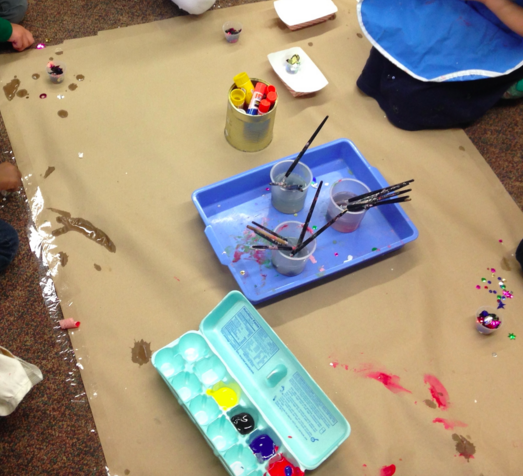The Power of Saying, “I notice...”


My first graduate school class was called Art Workshop for Teachers. On day one, my professor said we were going to learn how to respond to, not judge, the artwork of our students. “Turn to the person next to you and tell them something that you notice about their collage. Make it concrete” my professor instructed. “I notice that you cut your newspaper into many different shapes” my partner stated. “I did,” I proudly said out loud, “I have spent the last hour cutting these shapes.” I realized how much her comment validated my process and made me feel like she really saw what I had been working on.
In every class that followed we practiced this technique of “concrete noticing” and learned more about its importance. When you tell a child his/her painting is pretty, he/she will say thank you. But if you share what you notice and show a child that you are interested in the details of what they’re doing, that child will feel seen.
With this in mind, I excitedly began sharing my noticings with students in all areas of the classroom. “I notice that you are very carefully stacking the square block on top of the rectangular block,” I said to a three-year-old boy. “Yes, I am. Because I am making a tall rocket ship,” he said. “I notice that you used the blue marker to make lots of curvy lines on your paper. Can you show me how to do that?” I asked a young girl. “Sure!”, she said enthusiastically, “I just moved my hand like this!” I could go on and share hundreds of noticings and responses (don’t worry, I won’t!), but what continues to impact me most is seeing how well children respond when they feel supported.
When you share what you notice, then ask a child about it, you:
- Validate a process that they were in control of, helping to support the development of intrinsic motivation.
- Show a genuine interest in their thought process, which builds confidence
- Gently direct their attention to the choices that they have made, helping to encourage their own observation skills.
- Encourage an open-ended dialogue, helping them hone their communication skills.
- Identify strengths in their work process or creation that nurture unique self-expression.
Tips for Practicing the “I notice…” Technique:
Make it concrete: Just like my professor advised, share solid observations rather than opinions. Choose statements like “I notice that you made two circles with the play dough. Can you tell me how you did that?”, instead of “Wow, you made such perfect blue circles with the play dough.”
Follow Up: After you share what you notice, take it a step further with a follow-up question to extend their learning and promote their desire to seek new information.
Make yourself equal: Get down at the child’s level to look at their block structure, painting or latest creation as you make your observation—this way you’ll be eye to eye.
When shyness occurs: If a child is hesitant to engage with you about what they’re doing, simply narrate what you see—“You are putting the horse on top of the square block”— to demonstrate interest.
Remember, the very act of taking time to engage with a child by sharing observations demonstrates love, care and interest. So, tell us what were your “noticings” today?
Recent Articles
-
Playful Primer 10 Must-Have Toys for Your Next Backyard BBQ
Summer is just around the corner and we're ready for it! From backyard BBQs to neighborhood park outings, we've discovered...
read more -
Playful Primer Tips & Toys to Support Group Play Experiences
Catching a glimpse of children happily engaged in pretend play is like witnessing pure magic. Ever wonder how closely you...
read more -
Playful Primer 5 Ways to Strengthen the Bond Between Siblings
“I’ll take care of the bike. You take care of each other.” This is what I said to my children...
read more
